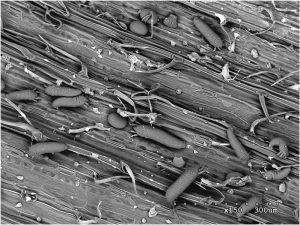 Our recent paper describes a novel experimental approach for studying life-history traits of minute phytophagous arthropods
Our recent paper describes a novel experimental approach for studying life-history traits of minute phytophagous arthropods
More info:
Karpicka-Ignatowska et al. 2019. A novel experimental approach for studying life-history traits of phytophagous arthropods utilizing an artificial culture medium. Scientific Reports 9, 20327
Our recent paper published in Animal Behaviour describes how behaviour, morphology and environment influence passive dispersal in phytophagous wheat curl mite.
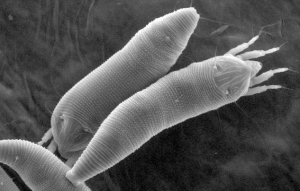 The paper is part of Alicja’s PhD thesis. Congratulations!
The paper is part of Alicja’s PhD thesis. Congratulations!
More info:
Laska A., Rector B. G., Skoracka A., Kuczyński L. 2019. Can your behaviour blow you away? Contextual and phenotypic precursors to passive aerial dispersal in phytophagous mites. Animal Behaviour 155, 141-151. https://doi.org/10.1016/j.anbehav.2019.07.003
The article about the effects of local climate on the correlation between weather and seed production in sessile oak (Quercus petraea) and European beech (Fagus sylvatica), co-authored by Jakub Szymkowiak, has been published in Agricultural and Forest Meteorology!
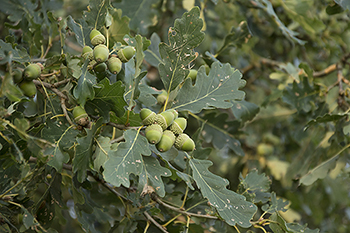
© Jakub Szymkowiak
Weather is believed to play a key role in triggering mast seeding in plants. However, while the relationships between weather and seed production are well-recognized for some species, there is also a range of species for which there seems to be no consistent links between meteorological conditions and seeding. Our results suggest that this puzzle can be explained by the variation in life history traits among species i.e., whether a particular species is a “flowering masting species” (= with seed production determined by variable flower production) or “fruit-maturation masting species” (= with seed production determined by variable ripening of more constant flower production). In particular, our results suggest that in case of “flowering masting species” (in our study: European beech), the meteorological cuing is spatially-consistent. In contrast, in “fruit-maturation masting species” (in our study: sessile oak) the effects of weather cues on seed production are mediated by the local climate, which leads to spatial variation in meteorological conditioning of seed production.
More info:
Bogdziewicz M., Szymkowiak J., Fernández-Martinez M., Peñuelas J., Espelta J.M. 2019. The effects of local climate on the correlation between weather and seed production differ in two species with contrasting masting habit. Agricultural and Forest Meteorology, 268: 109-115, https://doi.org/10.1016/j.agrformet.2019.01.016
Our recent paper published in Bird Conservation 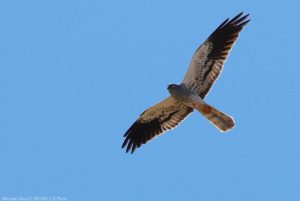 International is the first attempt to estimate the size of the Polish breeding population of the highly vulnerable farmland raptor: the Montagu’s Harrier. By combining multiple sources of data we estimated the Polish Montagu’s Harrier population at almost 3,400 breeding pairs, thus constituting 20% of the European Union population. Furthermore, we showed that public-gathered data obtained by volunteer-based citizen-science projects offer great potential for regular surveys to obtain large-scale estimates of population size.
International is the first attempt to estimate the size of the Polish breeding population of the highly vulnerable farmland raptor: the Montagu’s Harrier. By combining multiple sources of data we estimated the Polish Montagu’s Harrier population at almost 3,400 breeding pairs, thus constituting 20% of the European Union population. Furthermore, we showed that public-gathered data obtained by volunteer-based citizen-science projects offer great potential for regular surveys to obtain large-scale estimates of population size.
The paper is part of Natalia’s PhD thesis. Congratulations!
More info:
Królikowska N., Krupiński D., Kuczyński L. 2018. Combining data from multiple sources to design a raptor census – the first national survey of the Montagu’s Harrier Circus pygargus in Poland. Bird Conservation International, 28(3): 350-362.
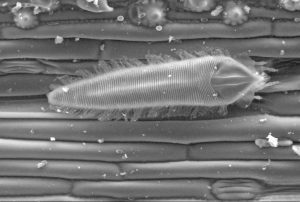 The article about genetic and host differentiation within the complex of phytophagous species belonging to Abacarus genus, authored by members of our Lab, was published in Experimental and Applied Acarology. The molecular analyses indicate that there may be at least several new species within the complex, that are awaiting formal description. One of them, Abacarus plumiger inhabiting smooth brome, has been described in this article.
The article about genetic and host differentiation within the complex of phytophagous species belonging to Abacarus genus, authored by members of our Lab, was published in Experimental and Applied Acarology. The molecular analyses indicate that there may be at least several new species within the complex, that are awaiting formal description. One of them, Abacarus plumiger inhabiting smooth brome, has been described in this article.
More info: Laska A., Majer A., Szydło W., Karpicka-Ignatowska K., Hornyák M., Labrzycka A., Skoracka A. 2018. Cryptic diversity within grass-associated Abacarus species complex (Acariformes: Eriophyidae), with the description of a new species, Abacarus plumiger n. sp. Experimental and Applied Acarology, 1-28. doi.org/10.1007/s10493-018-0291-6
An article co-authored by Anna Skoracka, Lechosław Kuczyński, Agnieszka Majer and Wiktoria Szydło, about the genetic structure within species complex of phytophagous mite, Aceria tosichella, was published in BMC Evolutionary Biology.
Mites belonging to the complex Aceria tosichella (wheat curl mite, WCM) are major pests of the world’s grain industry and our aim was to identify the factors behind its extensive diversification. We demonstrated unusually deep lineage diversification within the taxon. Using time-calibrated phylogenetic reconstruction we showed that lineage diversification pre-dates the influence of agricultural practices, and lineages started to radiate in the mid‑Miocene when major radiation of C4 grasses is known to have occurred. Furthermore, we showed that host generalization coincided with the expansion of the world’s grasslands in Pliocene. The genetic structure and evolutionary history of WCM lineages indicate their great colonization potential.
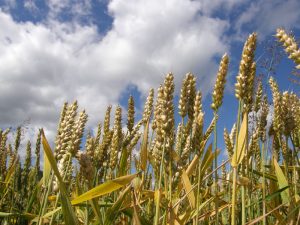 The study was done in cooperation with the University of Lisbon (Portugal) and University of Deakin (Australia).
The study was done in cooperation with the University of Lisbon (Portugal) and University of Deakin (Australia).
More info:
Skoracka A., Lopes L. F., Alves M. J., Miller A., Lewandowski M., Szydło W., Majer A., Różańska E. i Kuczyński L. 2018. Genetics of lineage diversification and the evolution of host usage in the economically important wheat curl mite, Aceria tosichella Keifer, 1969. BMC Evolutionary Biology 18: 122, doi.org/10.1186/s12862-018-1234-x
Review papers, co-authored by Anna Skoracka, about relationships between the mite Aceria tosichella, its main host: wheat, and the viruses that the mite transmits were published in Molecular Plant Pathology and Frontiers in Plant Science
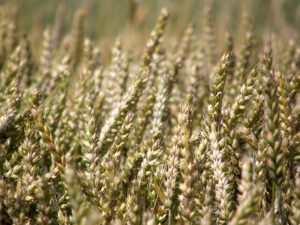 The mite Aceria tosichella (wheat curl mite, WCM) in the interaction with the virus causes considerable yield losses worldwide. The challenge of effectively managing this pest-virus complex is exacerbated by the existence of divergent WCM lineages that differ in host colonization and virus transmission abilities. In these publications, there is highlighted research progress in mite ecology and virus epidemiology that affects management and development of cereal cultivars with WCM- and virus-resistance genes. The potential application of molecular methods (e.g., transcriptomics, epigenetics, and whole-genome sequencing) are proposed to understand the chemical and cellular interface between the wheat plant and WCM-viruses complexes.
The mite Aceria tosichella (wheat curl mite, WCM) in the interaction with the virus causes considerable yield losses worldwide. The challenge of effectively managing this pest-virus complex is exacerbated by the existence of divergent WCM lineages that differ in host colonization and virus transmission abilities. In these publications, there is highlighted research progress in mite ecology and virus epidemiology that affects management and development of cereal cultivars with WCM- and virus-resistance genes. The potential application of molecular methods (e.g., transcriptomics, epigenetics, and whole-genome sequencing) are proposed to understand the chemical and cellular interface between the wheat plant and WCM-viruses complexes.
The publications were prepared in cooperation with the University of Nebraska-Lincoln, USA and Crop Research Institute, Czech Republic.
More info:
Skoracka A., Rector B. G., Hein G., L. 2018. The interface between wheat and the wheat curl mite, Aceria tosichella, the primary vector of globally important viral diseases. Frontiers in Plant Science 9 (1098), 1-8; DOI: 10.3389/fpls.2018.01098
Singh K., Wegulo S. N., Skoracka A., Kundu J. K. Wheat streak mosaic virus: a century-old virus with rising importance worldwide. Molecular Plant Pathology 19(9): 2193-2206; DOI: 10.1111/mpp.12683
An article, co-authored by Lechosław Kuczyński, was published in the latest issue of Journal of Evolutionary Biology.

Photo: Cezary Korkosz
Using data collected in a secondary contact zone of two hybridizing songbirds: the Common Nightingale (Luscinia megarhynchos) and the Thrush Nightingale (Luscinia luscinia), we looked for associations between habitat use and bill morphology. In line with our previous results (https://doi.org/10.1111/1365-2656.12808), we found that the two nightingale species differ in habitat use in allotopic but not in syntopic sites. Moreover, birds from allotopic sites showed higher interspecific divergence in relative bill size compared to birds from syntopic sites. Our results are consistent with the view that interspecific competition in nightingales has resulted in partial habitat segregation in sympatry and that the habitat‐specific food supply has in turn very likely led to bill size divergence.
The study was done in cooperation with the Charles University in Prague, Czech Republic.
More info:
Sottas C. , Reif J. , Kuczyński L. and Reifová R. 2018. Interspecific competition promotes habitat and morphological divergence in a secondary contact zone between two hybridizing songbirds. Journal of Evolutionary Biology, 31: 914-923, DOI: 10.1111/jeb.13275
Address
Population Ecology Lab
Institute of Environmental Biology
Faculty of Biology
Adam Mickiewicz University in Poznań
Uniwersytetu Poznańskiego 6, 61-614 Poznań, Poland
Phone: +48 61 829-56-16
E-mail: popecol@amu.edu.pl
Archives
- January 2025
- May 2024
- September 2023
- July 2023
- June 2023
- May 2023
- April 2023
- February 2023
- April 2022
- March 2022
- January 2022
- October 2021
- September 2021
- June 2021
- May 2021
- April 2021
- March 2021
- December 2020
- September 2020
- August 2020
- May 2020
- March 2020
- December 2019
- November 2019
- August 2019
- May 2019
- January 2019
- November 2018
- October 2018
- September 2018
- August 2018
- July 2018
- June 2018
- May 2018
- March 2018
- December 2017
- November 2017
- September 2017
- August 2017
- July 2017
- June 2017
- May 2017
- February 2017
- January 2017
- December 2016
- September 2016


